Ronny Deila has had success virtually everywhere he has been a manager. After his playing career, Deila started his managerial journey in his native Norway with Strømsgodset, where he won the Eliteserien as well as the Norwegian Cup. He then moved on to Glasgow giants Celtic, where he won back-to-back Scottish League titles as well as one Scottish Cup. After a stop with Vålerenga, Deila moved to MLS, becoming the manager at New York City FC. Deila finished his time in New York with an MLS Cup triumph. His next challenge sees him tasked with reviving Belgian giants Standard Liège.
Standard haven’t won the Belgian Pro League since the 2008/09 season and Deila is now Standard’s fourth different permanent manager in the last two seasons, after the tenures of Phillipe Montanier, Mbaye Leye, and Luka Elsner were all short-lived. This tactical analysis will take a look at Ronny Deila’s tactics and analyse whether he is the man to bring the glory days back to the Stade Maurice Dufrasne.
Ronny Deila Formation
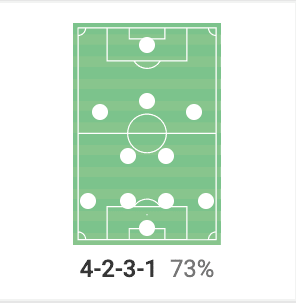
During his time in New York with NYCFC, Deila almost exclusively used a 4-2-3-1 system, which was able to give him the most balanced squad from what he had at his disposal. This was also the preferred formation at his other stops, with it being likely that he will utilise the same system once he gets his tenure at Standard Liége officially underway. This graphic shows his heavy favouritism towards the 4-2-3-1, with there normally not being much variation match-to-match when it comes to the formation the Deila prefers to set his teams up in.
Ronny Deila Build up style
This first section will take a look at the typical style of build-up play that Deila’s side used during his time at NYCFC. Because of the nature of his preferred 4-2-3-1 formation, the double-pivot players tend to be key when Deila’s sides look to correctly execute their build-up play.
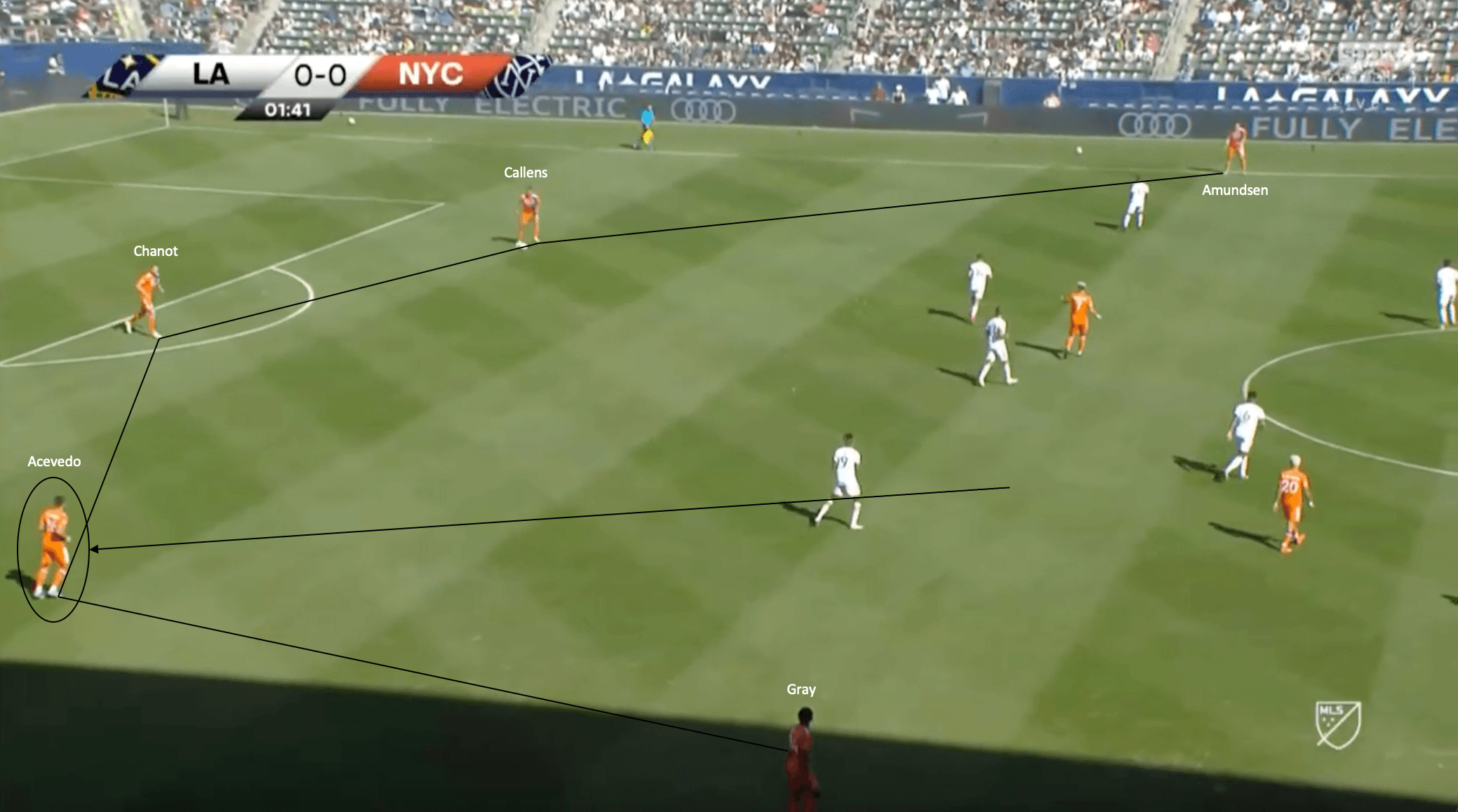
The image above shows a good example of the type of shape that Deila looks for his sides to have when they are in the build-up phase. Notice how the two fullbacks, Amundsen and Gray, are pushed high and wide, allowing them to keep the width, as well as keeping the opposition wide players stretched. The role of the double-pivot in these moments is key, as illustrated by the positioning that Nicolás Acevedo has taken up. He has left his position in midfield alongside Alfredo Morales to help in this phase. He drops in between Gray and Maxime Chanot, essentially becoming the third centre-back during these phases of play.
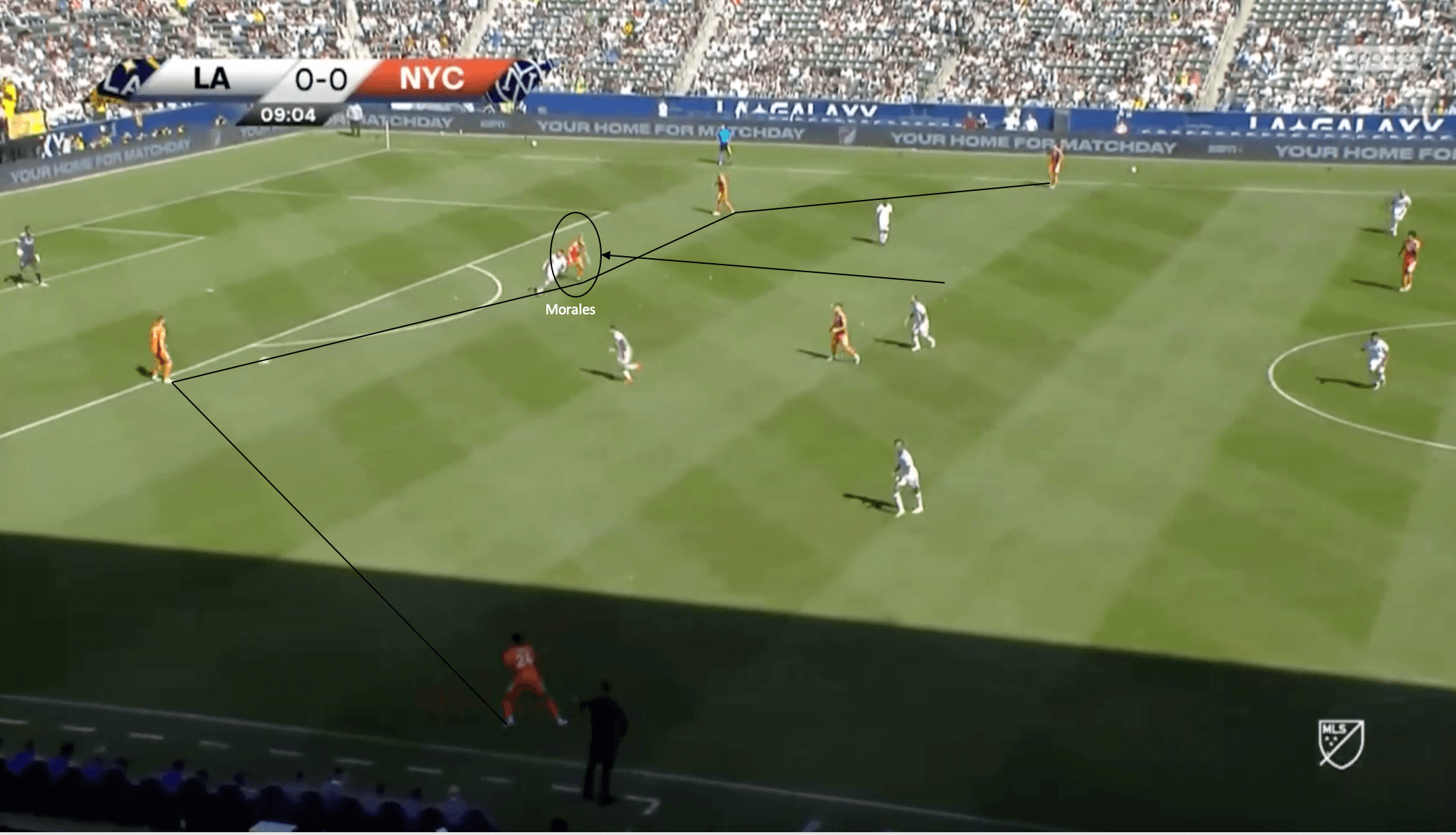
The image above shows another example of this build-up shape from the same match, NYCFC’s first match of the season against the LA Galaxy. Notice how the shape is similar, with the two fullbacks playing high and wide on the touchlines. This time, however, instead of Acevedo dropping in and becoming the right-sided centre-back to form a back three, Morales instead drops in, splitting both Alexander Callens and Maxime Chanot. The rotation and positioning of the double-pivot players is key to Ronny Deila when it comes to build-up play.
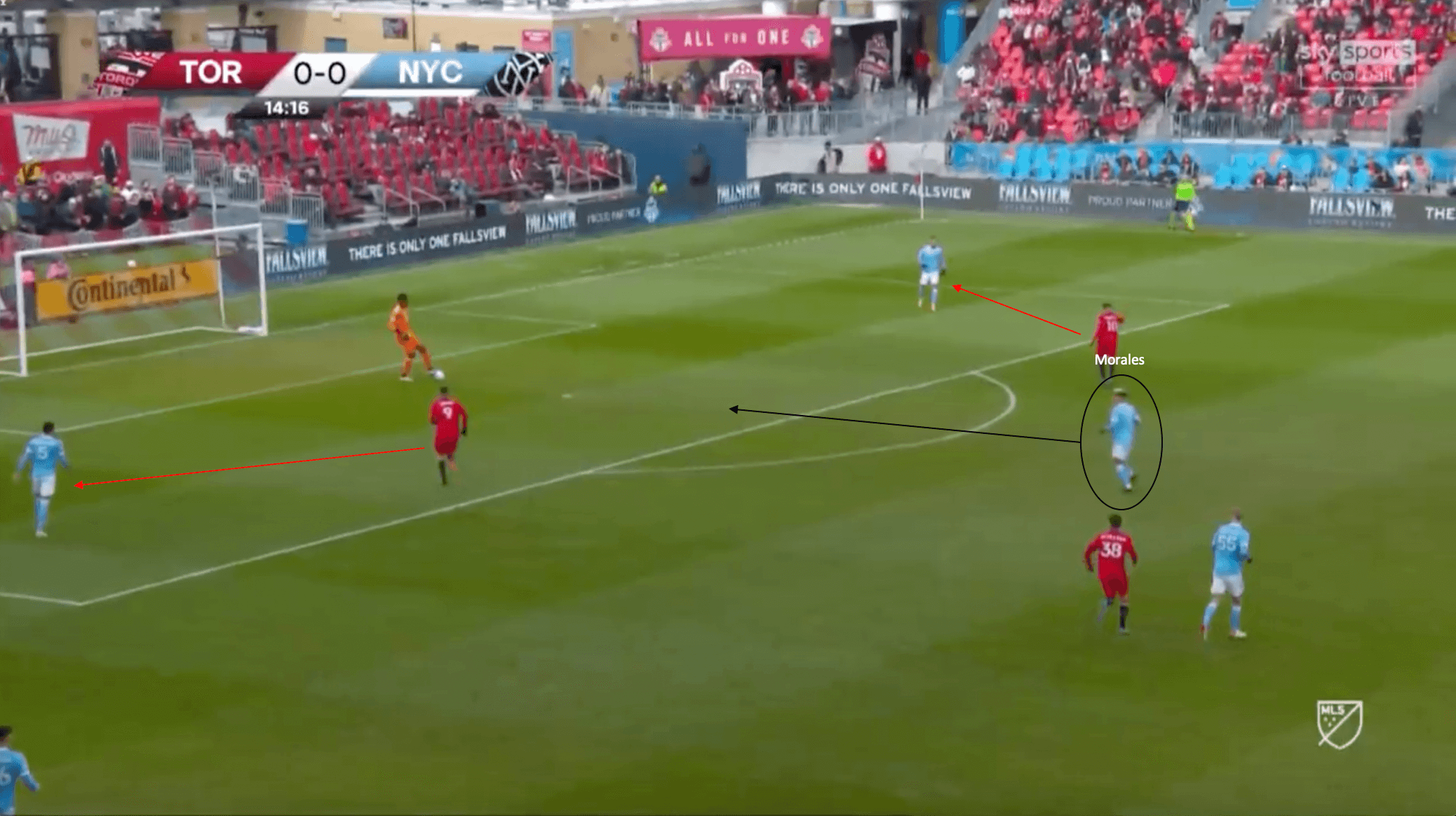
The image above shows another reason the double-pivot players are so crucial in the way that Ronny Deila prefers to use them during build-up phases. In this phase of play, both of NYCFC’s centre-backs are being marked by Toronto’s forward attacking players. Because of the marking of the Toronto forwards, the role of Alfredo Morales is key. He drops deep towards the edge of the penalty box, allowing goalkeeper Sean Johnson an outlet ball to escape the Toronto press. The ensuing pass is played to Morales, who then has the space to turn and find the fullback on the near side to continue the attacking move for NYCFC. This is another way that the double-pivot is crucial to Deila’s style of build-up play.
At Standard Liège, Deila will likely use the combination of Gojko Cimirot and Nicolas Raskin in the double-pivot; with these two players likely becoming key when Standard are looking to build out from the back.
Ronny Deila Attacking style of play
This next section will take a deeper dive into the attacking style of play that NYCFC had under Ronny Deila. The role of the fullbacks and wide attacking midfielders was crucial when his side won MLS Cup and will likely continue to be essential if he is to win silverware with Standard Liége.
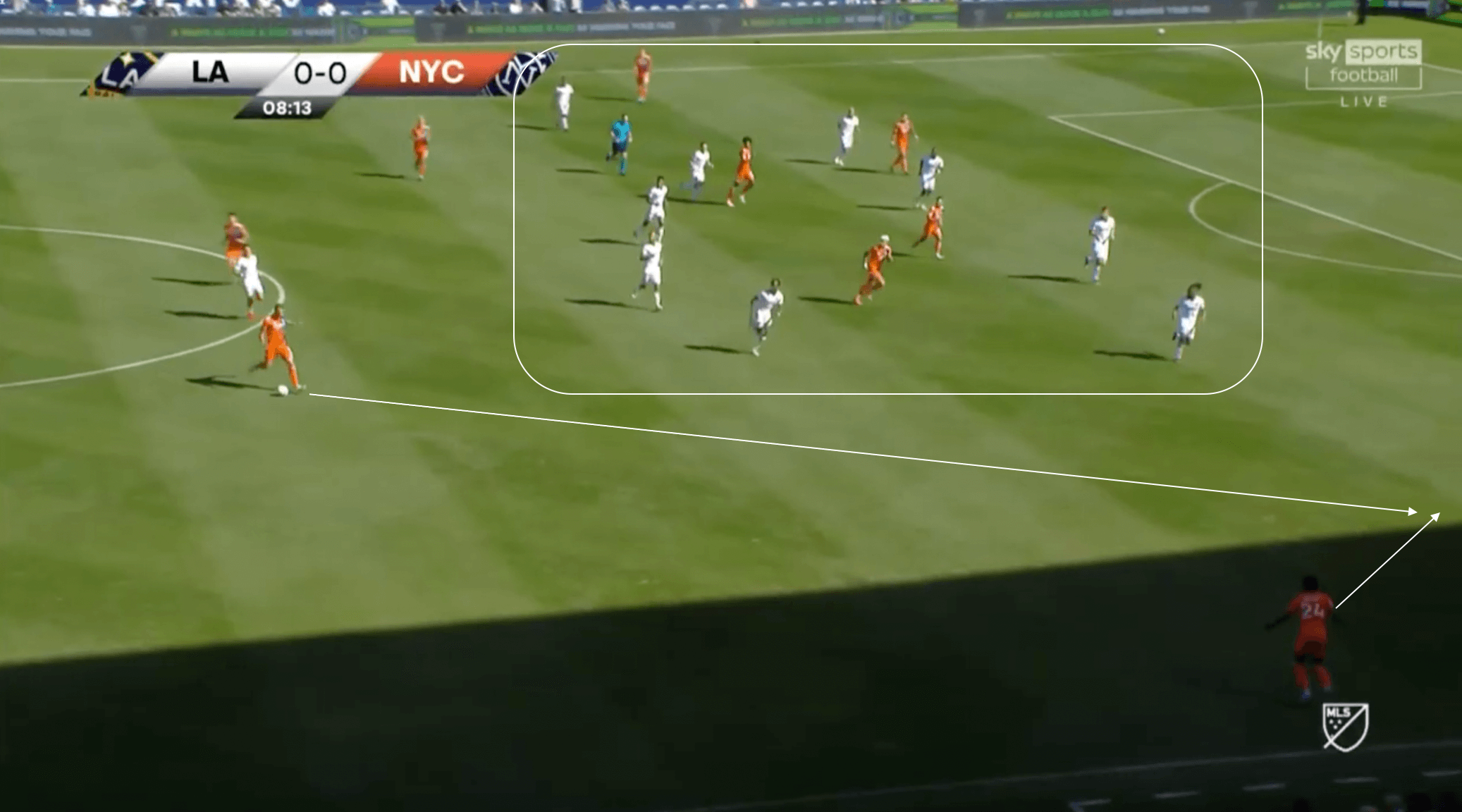
Above shows an example of the passing movements that Deila implemented at NYCFC which made space for the fullbacks down either flank. This phase of play started with the ball on the far touchline before being rotated centrally towards the near touchline where the right-back is completely unmarked. Notice the number of players situated on the far side of the pitch as a result of the play quickly being shifted to the near side. This allowed the space in behind for the fullback to get into, with the ball played to his feet before an eventual cross was sent in towards the penalty spot. These quick switches of play help to create space for the wide players on that side, allowing them the time to play good crosses into the box and create chances as a result.
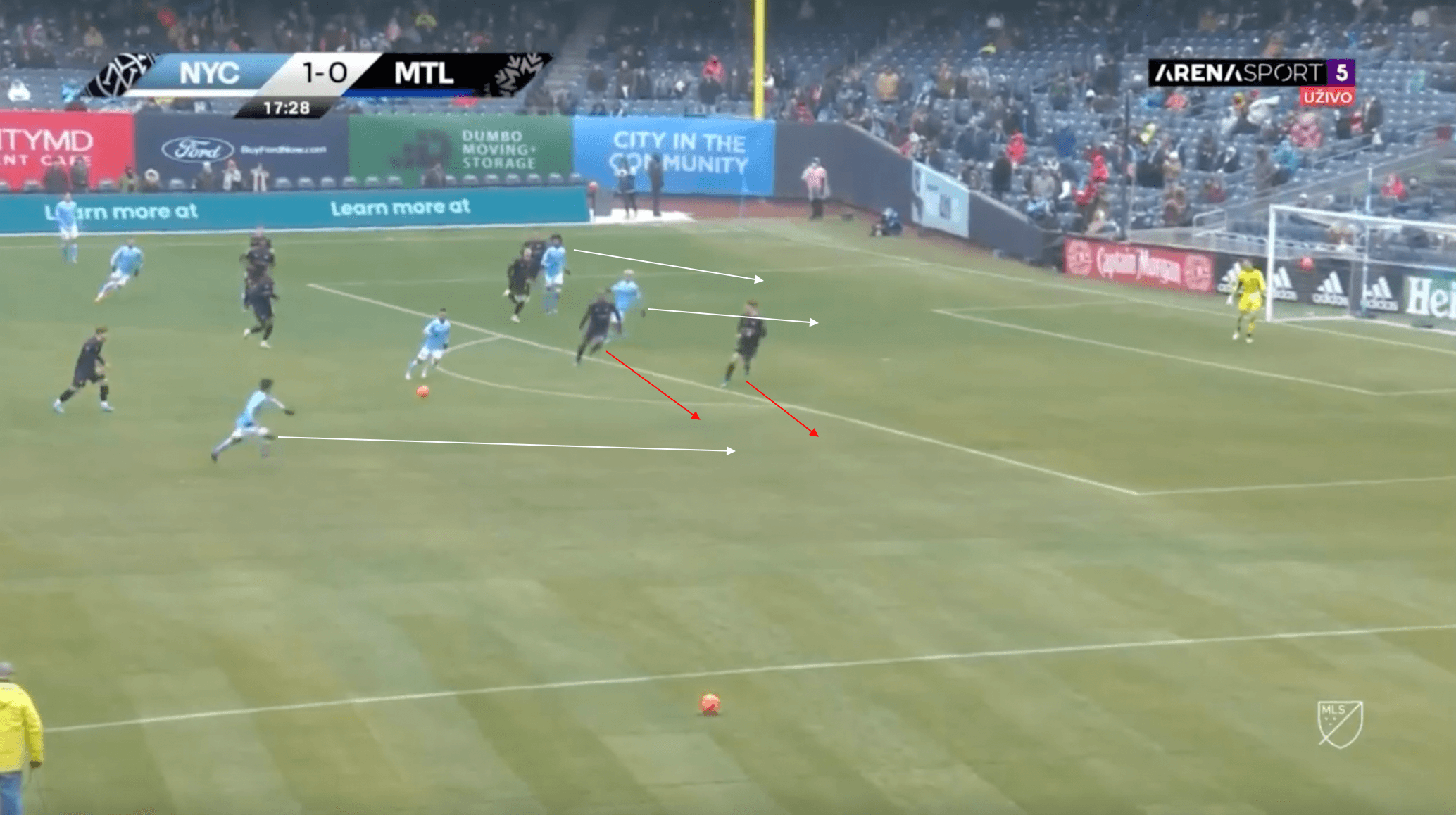
The image above shows another quick switch of play by NYCFC that catches the opposition off guard. The ball is played over to the near touchline, to the fullback making an unmarked run in behind. This forces the opposition defence to quickly shift with both defenders with the red arrows shifting to try and close down the space that the fullback is running into.
As a result, two NYCFC attackers can make runs into the box unmarked, which unfortunately were not able to be found by the ensuing cross of the fullback. The general idea from Deila’s side was there, however: try and catch the opposing defence off balance with quick switches of play to then send dangerous crosses into the box to unmarked runners.

This final example also illustrates this tactical principle in action. Preceding this image was a quick switch of play to the opposite flank after dragging the opposition defence to the near side. NYCFC’s left back, Christopher Gloster, runs onto the ball in space, making an underlapping run, which allows Maxi Moralez the overlapping run. Gloster can play the ball to Moralez, who is then able to send a dangerous cross into the box.
All in all, Deila’s style of attacking play should be entertaining to watch with this Standard Liége side.
Ronny Deila Defensive style of play
This next section will take a deep dive into the defensive style of play that Deila implemented at NYCFC, and how that may transition to Belgian football.
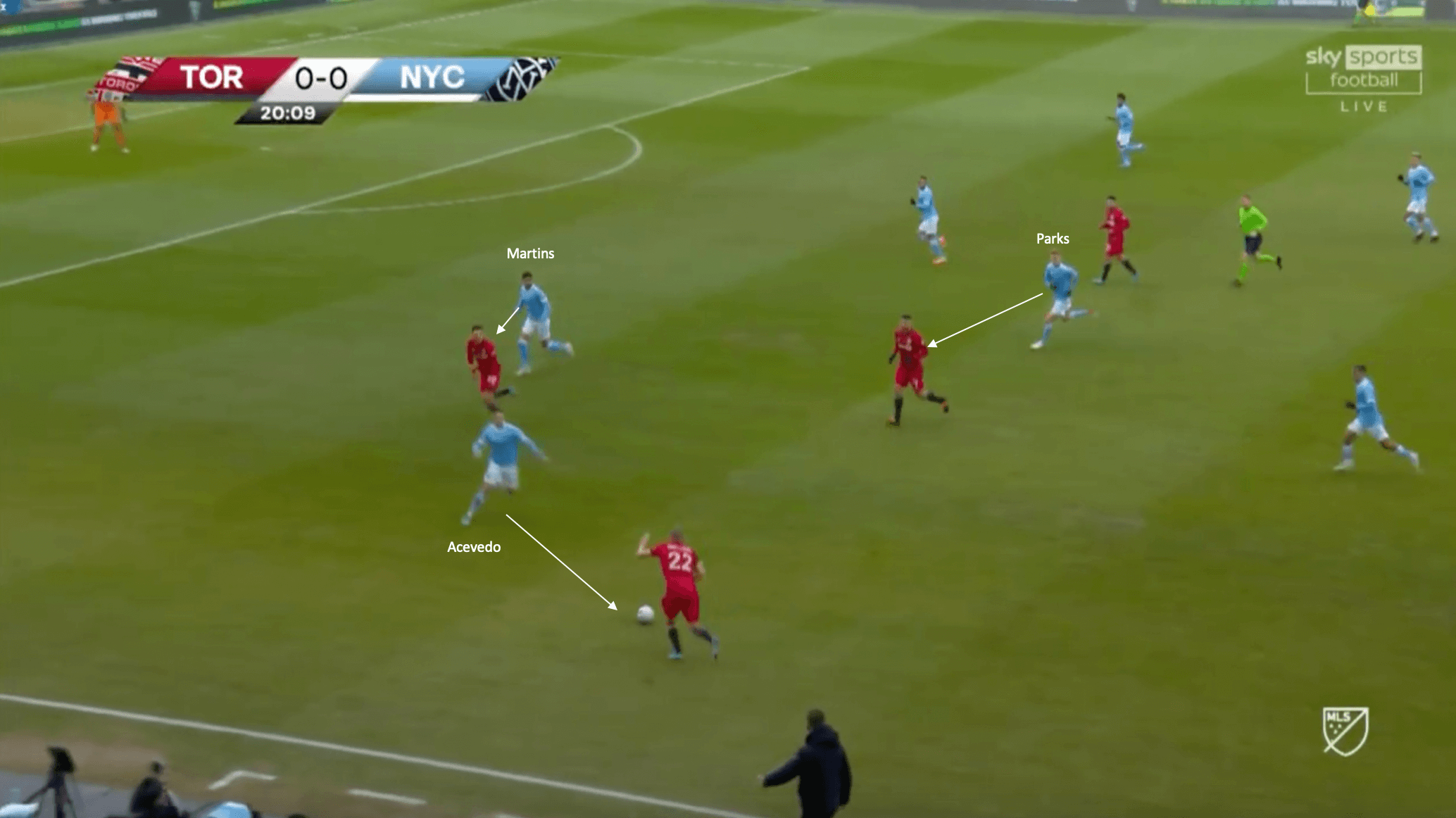
Under Ronny Deila's coaching style, NYCFC did not look to sit back and defend in a deeper shape. They looked to engage the ball carriers when they made it to the attacking third, with players stepping out of position being covered by teammates. In this phase of play above against Toronto, the right-back, Nicolas Acevedo, steps out of his position to close down the player in possession.
The Toronto forward looks to exploit the space in behind, but because of how Acevedo engages, he cuts off the passing lane, while Thiago Martins marks the attacker running in behind as well. The ensuing ball is then played inside, but Keaton Parks can close the midfielder down quickly, winning back possession for NYCFC as a result.
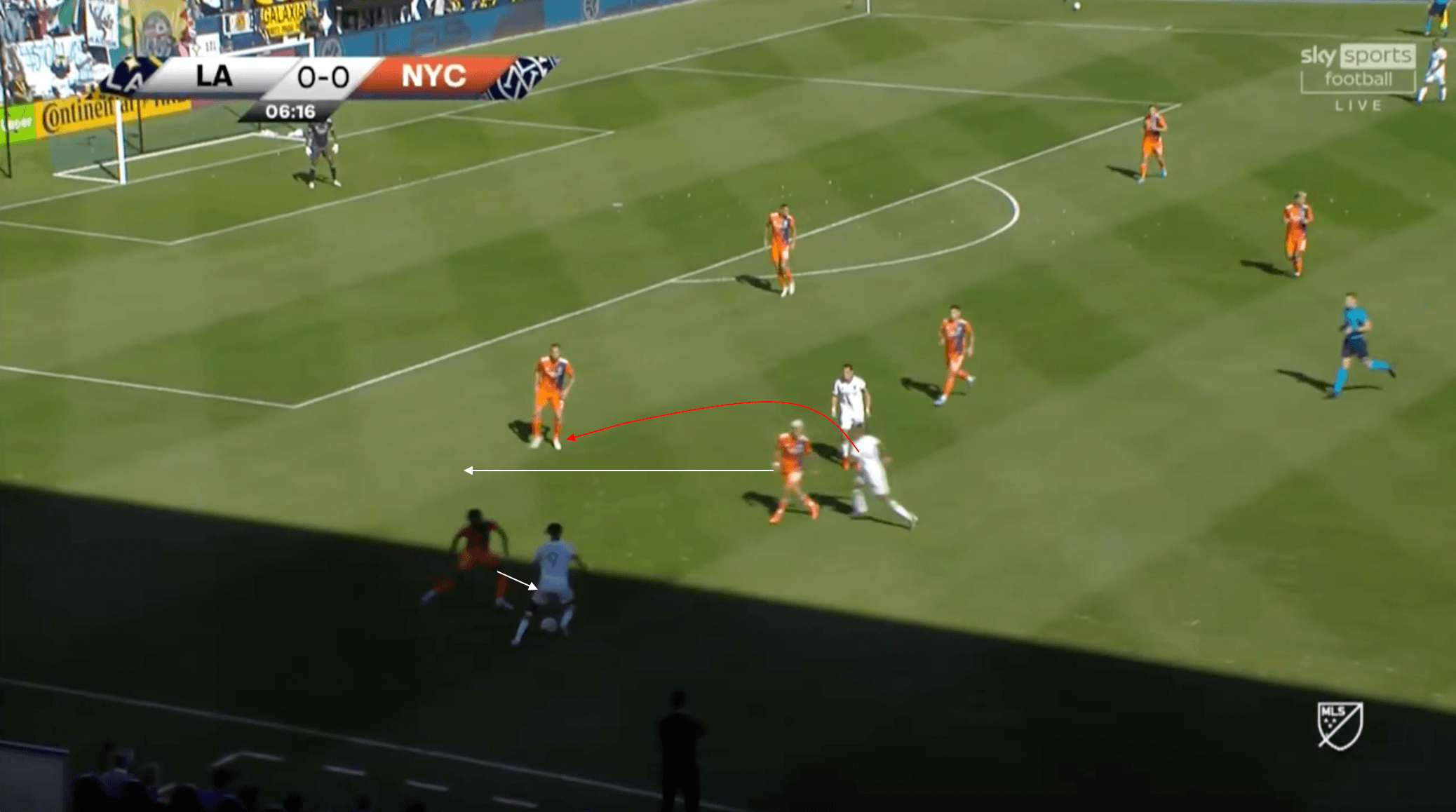
The image above shows another example of the positional covering that NYCFC frequently relied upon under Deila to ensure spaces were not left behind the defence. With the fullback stepping out to engage the ball carrier, this left a vacant space down the flank behind the NYCFC defence. One of the Galaxy’s attackers looked to make a run into that space, but Morales was able to recognise this and cover that space, marking the runner and eliminating him as a passing option.
Ronny Deila Pressing
When it comes to pressing, NYCFC looked to be on the front foot under Deila tactics, defending from the front and not giving the opposition defenders much time at all with the ball at their feet. The shape of the system also slightly altered during these pressing moments, with a 4-4-2 shape becoming a common theme. This final section will take a look at the pressing style of a Ronny Deila team.

The image above shows the usual shape that NYCFC formed during pressing moments. Notice how the formation switches to a 4-4-2, with one of the attacking midfielders joining Girona-bound Valentin Castellanos up top. They looked to put constant pressure on the opposition goalkeeper as well as centre-backs, forcing them to play the ball quickly and looking to force errors. While NYCFC were not the most high-pressing side in MLS under Deila's style of play uses these pressing tactics. Their pressing still forced the opposition into turnovers in dangerous areas.
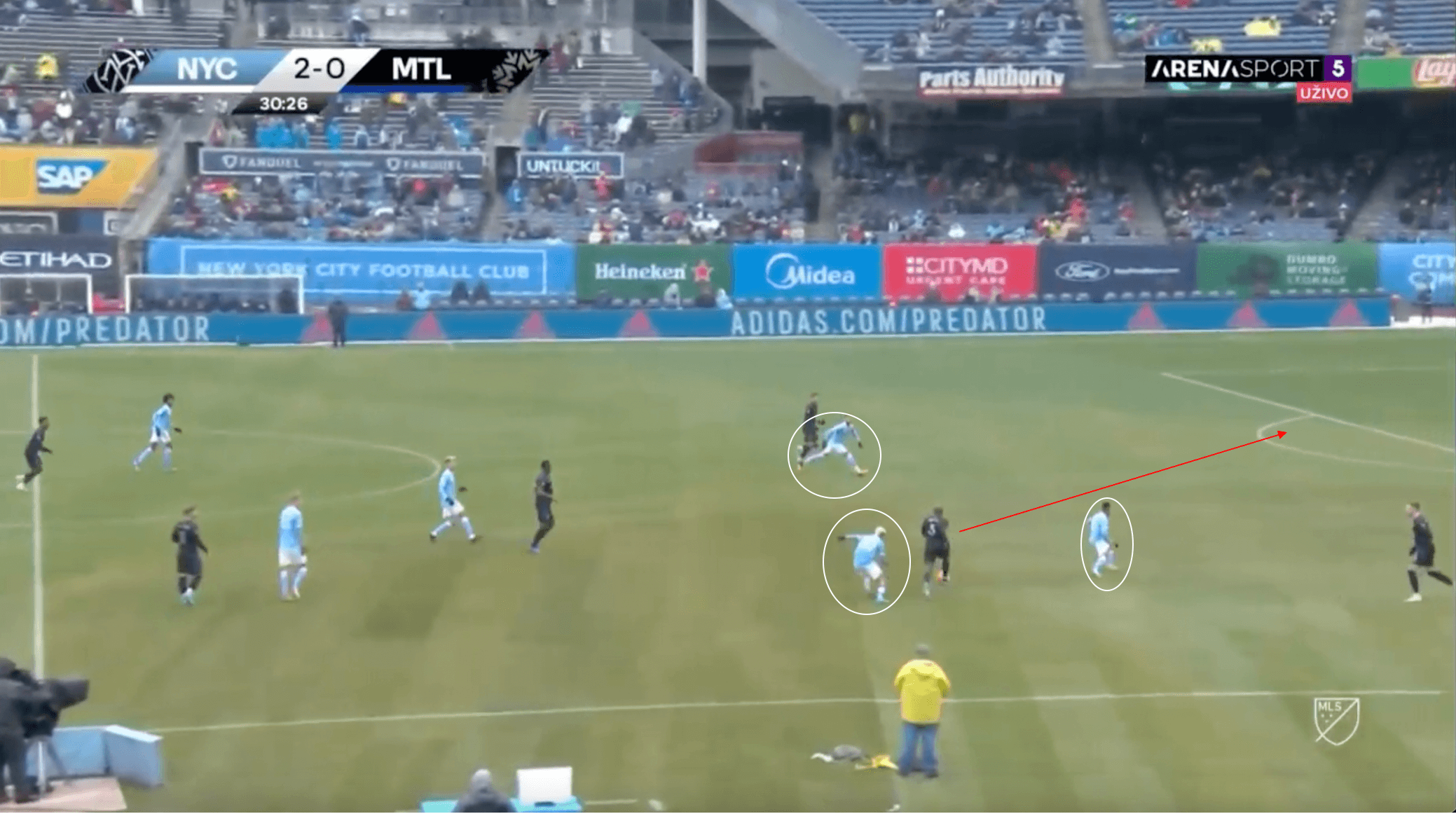
The image above shows another example of the press that NYCFC utilised under Ronny Deila. The Montreal player in possession is positioned facing towards his own goal, with three NYCFC players closing off passing lanes and options for him to find. As a result, he is forced to play the ball all the way back to his goalkeeper, who, after pressure from the forward players of NYCFC, is forced to play it long, giving NYCFC a chance to win the ball back quickly. It will be interesting to see how Deila uses these pressing tactics at Standard Liége.
Conclusion
Ronny Deila decided mid-season to leave Manchester City-owned NYCFC and depart for fallen Belgian giants Standard Liége. Undoubtedly, the lure of returning to European football was a leading factor in Deila’s decision to leave the reigning MLS Cup champions. This tactical analysis piece has broken down Ronny Deila’s style into the different phases of play, as well as giving Standard Liége fans a sample of what is likely to come from their side under the Norwegian.

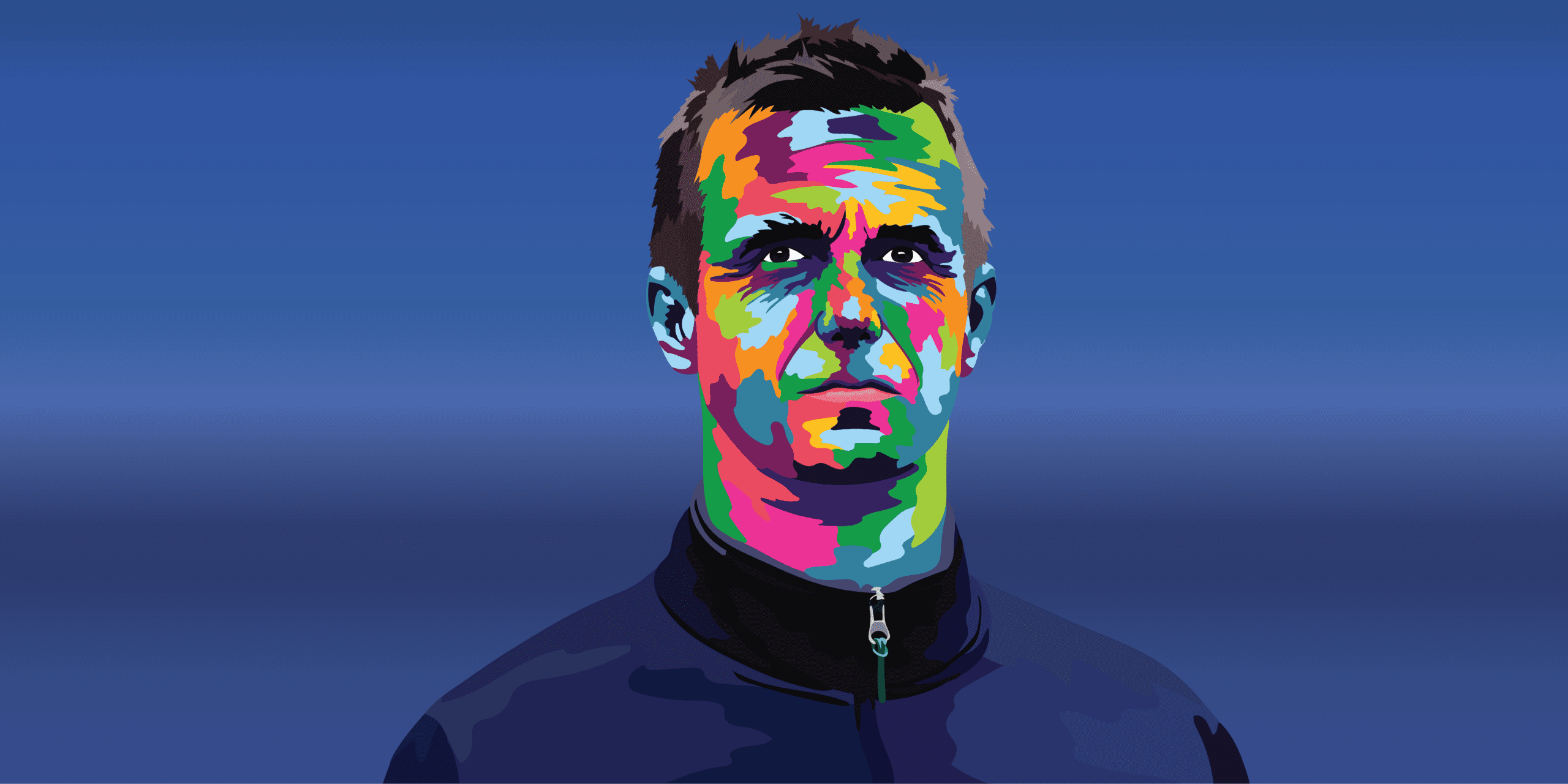



Comments